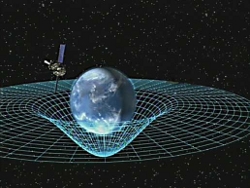Saturday Morning Science 010
 Saturday Morning Science is back!!! I wish I could say that something ground breaking, phase changing or paradigm shifting had happened since the last instalment. Something that had eluded detection by the entire world and could just now be revealed to rgbFilter readers as an exclusive article. But no, science doesn’t work that way and beware of anyone that claims it does. The biggest story this week involves an experiment that took a year to run, decades to implement and proved a theory that is nearing its centenary.
Saturday Morning Science is back!!! I wish I could say that something ground breaking, phase changing or paradigm shifting had happened since the last instalment. Something that had eluded detection by the entire world and could just now be revealed to rgbFilter readers as an exclusive article. But no, science doesn’t work that way and beware of anyone that claims it does. The biggest story this week involves an experiment that took a year to run, decades to implement and proved a theory that is nearing its centenary.
Gravity Probe B– That gravity curves space-time is pretty much common knowledge to anyone who imagines that they understand what characters in Star Trek are saying when they go on about “space warps”. For all of the use and abuse that the concept has received in popular culture it derives from concepts at the very heart of Einstein’s General Theory of Relativity. However actually measuring the effect of gravity on space and time even for an object as large and local as the Earth is very difficult seeing as the deviation is about an inch over 24,000 miles and as the Earth is only 7926 miles in diameter this experiment is best done in space.
Gravity Probe A was launched in 1976 and involved a 1 hour and 55 minute flight by a Scout class rocket housing a hydrogen maser. The difference between the timing of the maser’s signal against a ground based clock showed that time aboard the Scout, as it went beyond the Earth’s gravity field (to an altitude of 6200 miles), was passing faster than the clock sitting near the bottom of our local gravity well. How big a difference? The Scout’s clock was faster by 4.5 parts in 1010 but it provided the first measurement of the effects that Einstein had predicted.
The sequel, Gravity Probe B took more time to implement than the time between Return of the Jedi and The Phantom Menace but with more successful results. Probe B was launched in 2004. Its experiments would deal with two other predictions of the General Theory of Relativity, frame dragging and the geodetic effect. Both effects can be broadly grouped as dealing with precession; changes in the orientation of the rotation axis of a rotating body. At the risk of sounding trite with the Gravity Probe B experiment it can be said that the General Theory of Relativity has come full circle. It was unexplained deviations in the procession of the planet Mercury that indicated that there was something missing when you apply Newtonian physics to planetary orbits and explaining that discrepancy was one of Relativity’s initial strengths.
What made the predictions of these effects difficult to make evident were the extremes of magnitude involved and the precision of measurement required. The Probe B experiments intended to determine how the Earth’s gravitational field “warps” space and time and how its rotation drags space-time along that path by measuring minute changes spin of four gyroscopes housed in the probe orbiting at a 400mile high polar orbit while the satellite would use its onboard telescope to align itself to a distant reference star (HR8703 a.k.a. IM Pegasi a binary star in the constellation Pegasus).
Initial results were able to confirm the geodetic effect to 1% accuracy but frame dragging proved more difficult and subtle effect. Starting from a sloppy 15% the researchers where able to deal with the experiments’ artifacts and produce a confirmation on the frame dragging effect to better than 0.5%. As of May 4th, 2011 with the public announcement of the experiments findings NASA has successfully closed a project which it started back in 1964.
Further reading: Space.com’s overview of the project and a very concise article by physicist, Michio Kaku.




696240 728775I like what you guys are up too. Such smart work and reporting! Carry on the superb works guys I?ve incorporated you guys to my blogroll. I feel it will improve the value of my internet site 192055